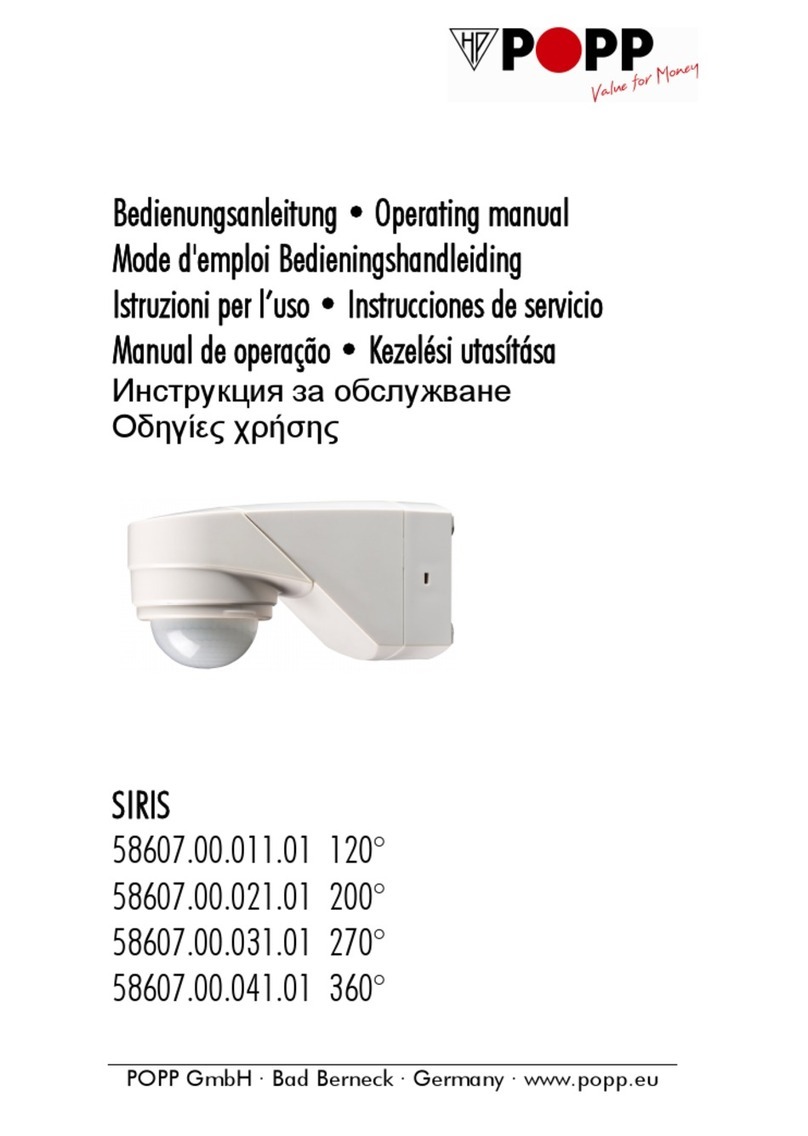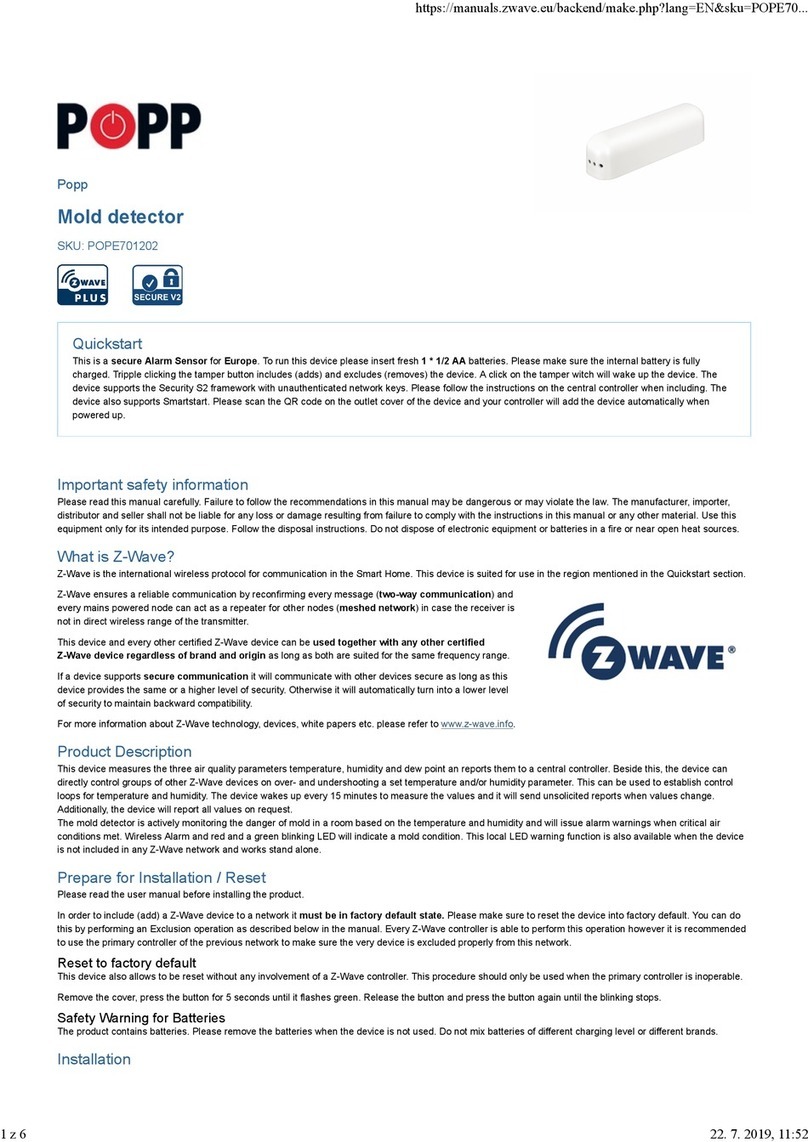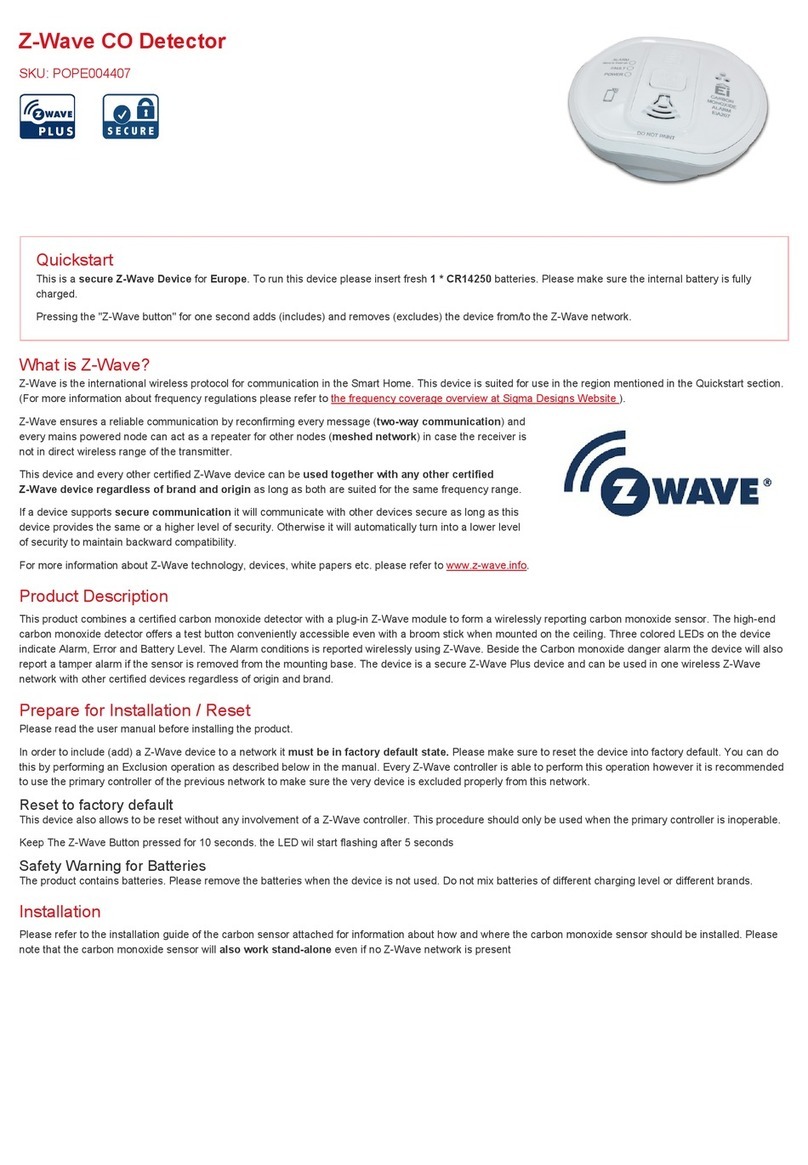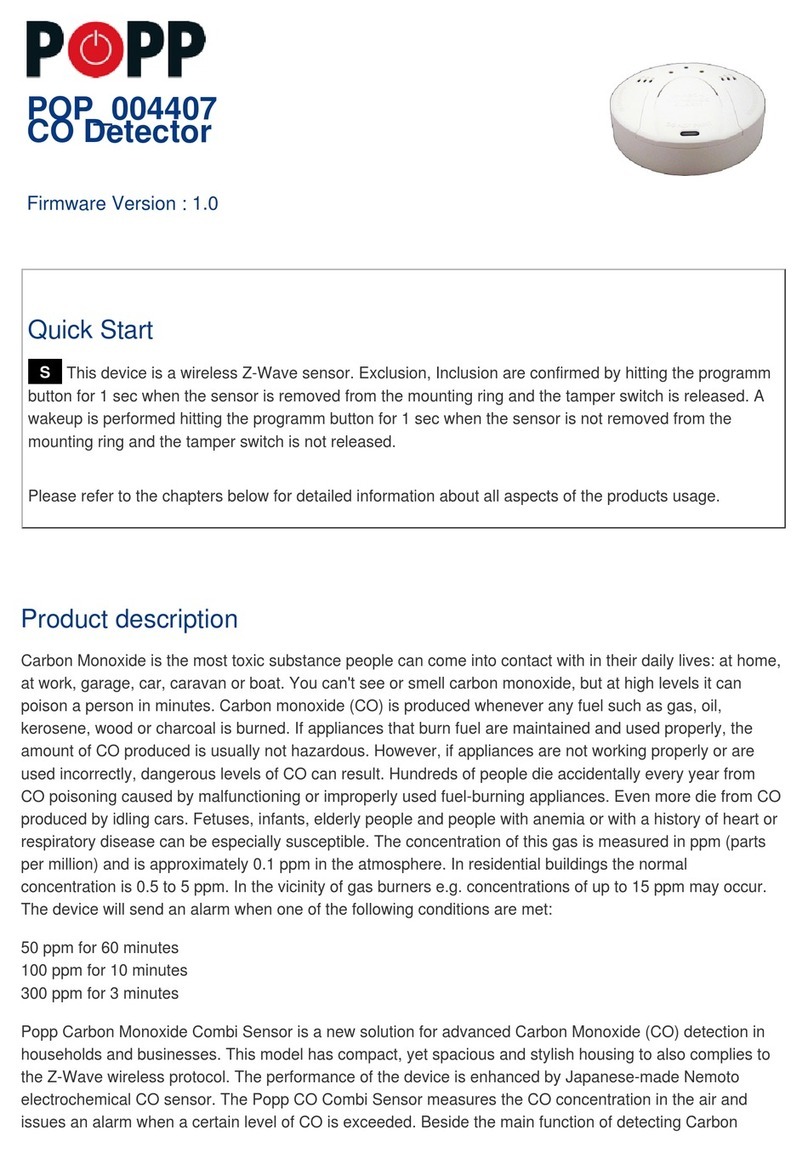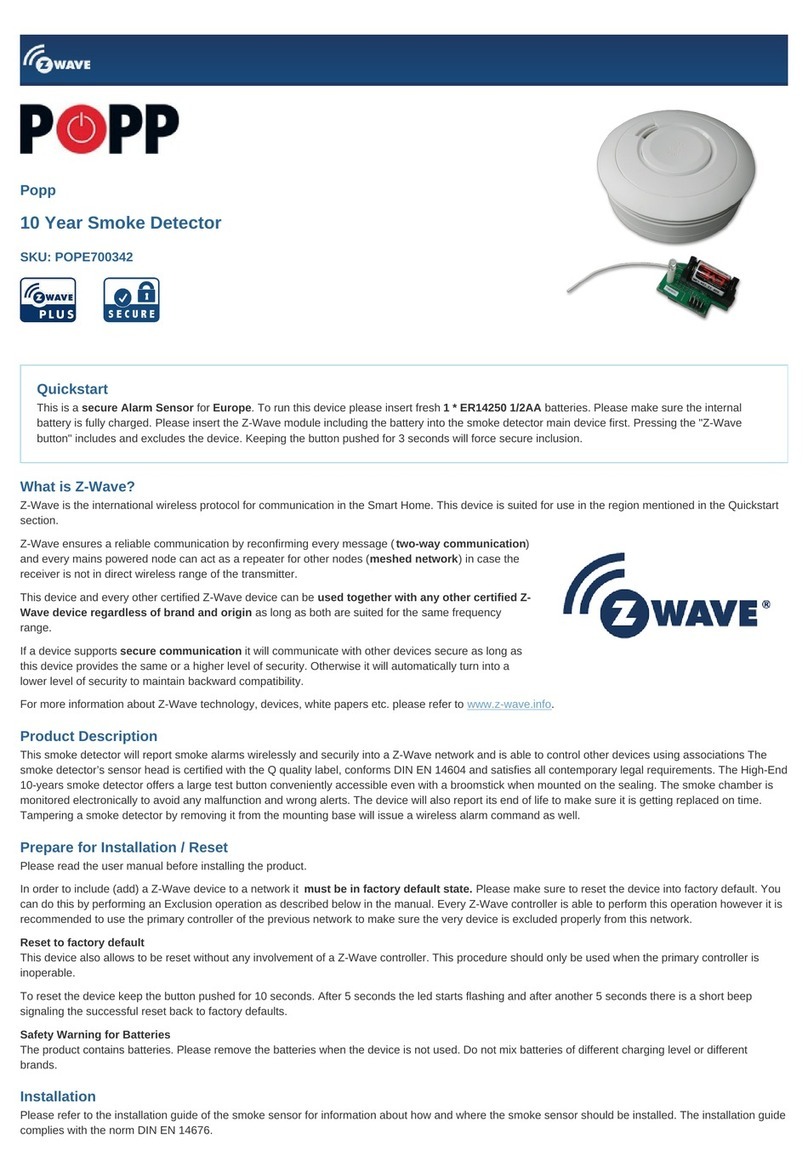Mold detector
SKU: POPE701202
Quickstart
This is a secure Alarm Sensor for Europe. To run this device please insert fresh 1 * 1/2 AA batteries. Please make sure the internal battery is fully
charged. Tripple clicking the tamper button includes (adds) and excludes (removes) the device. A click on the tamper witch will wake up the device. The
device supports the Security S2 framework with unauthenticated network keys. Please follow the instructions on the central controller when including. The
device also supports Smartstart. Please scan the QR code on the outlet cover of the device and your controller will add the device automatically when
powered up.
What is Z-Wave?
Z-Wave is the international wireless protocol for communication in the Smart Home. This device is suited for use in the region mentioned in the Quickstart section.
(For more information about frequency regulations please refer to the frequency coverage overview at Sigma Designs Website ).
Z-Wave ensures a reliable communication by reconfirming every message (two-way communication) and
every mains powered node can act as a repeater for other nodes (meshed network) in case the receiver is
not in direct wireless range of the transmitter.
This device and every other certified Z-Wave device can be used together with any other certified Z-
Wave device regardless of brand and origin as long as both are suited for the same frequency range.
If a device supports secure communication it will communicate with other devices secure as long as this
device provides the same or a higher level of security. Otherwise it will automatically turn into a lower level
of security to maintain backward compatibility.
For more information about Z-Wave technology, devices, white papers etc. please refer to www.z-wave.info.
Product Description
This device measures the three air quality parameters temperature, humidity and dew point an reports them to a central controller. Besidethis,the device can
directly control groups of other Z-Wave devices on over- and undershooting a set temperature and/or humidity parameter. This can be used to establish control
loops for temperature and humidity. The device wakes up every 4 minutes to measure the values and it will send unsolicited reports when values
change.Additionally,the device will report all values on request.
The mold detector is actively monitoring the danger of mold in a room based on the temperature and humidity and will issue alarm warnings whencriticalair
conditions met. Wireless Alarmand redand a green blinking LED will indicate a mold condition. This local LED warning function is also available when the device
is not included in any Z-Wave network and works stand alone.
Prepare for Installation / Reset
Please read the user manual before installing the product.
In order to include (add) a Z-Wave device to a network it must be in factory default state. Please make sure to reset the device into factory default. You can do
this by performing an Exclusion operation as described below in the manual. Every Z-Wave controller is able to perform this operation however it is recommended
to use the primary controller of the previous network to make sure the very device is excluded properly from this network.
Reset to factory default
This device also allows to be reset without any involvement of a Z-Wave controller. This procedure should only be used when the primary controller is inoperable.
Once Cover is removed and tamper switch is tripped, push the tamper for 5 seconds until red LED blinks. Then release tamper and push it again for 5 seconds
until LED blinks.
Safety Warning for Batteries
The product contains batteries. Please remove the batteries when the device is not used. Do not mix batteries of different charging level or different brands.
Installation
The POPP Mold Detector can be mounted in two ways.
1. use the enclosed adhesive tape. Clean the substrate carefully from grease and dirt to achieve optimum strength of the adhesive areas.
2. use the enclosed screws and dowels to fix it to the wall or other surface.
Inclusion/Exclusion
On factory default the device does not belong to any Z-Wave network. The device needs to be added to an existing wireless network to communicate with the
devices of this network. This process is called Inclusion.
Devices can also be removed from a network. This process is called Exclusion. Both processes are initiated by the primary controller of the Z-Wave network. This
controller is turned into exclusion respective inclusion mode. Inclusion and Exclusion is then performed doing a special manual action right on the device.
Inclusion
Tripple clicking the tamper button includes (adds) the device.
Exclusion






